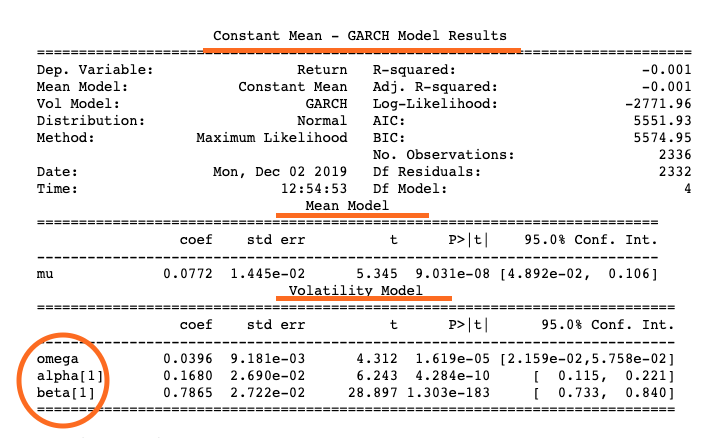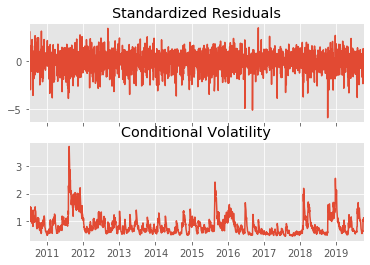How to implement GARCH models in Python
GARCH Models in Python

Chelsea Yang
Data Science Instructor
Python "arch" package
from arch import arch_model

1 Kevin Sheppard. (2019, March 28). bashtage/arch: Release 4.8.1 (Version 4.8.1). Zenodo. http://doi.org/10.5281/zenodo.2613877
Workflow
Develop a GARCH model in three steps:
- Specify the model
- Fit the model
- Make a forecast
Model specification
Model assumptions:
- Distribution:
"normal"(default),"t","skewt" - Mean model:
"constant"(default),"zero","AR" - Volatility model:
"GARCH"(default),"ARCH","EGARCH"
basic_gm = arch_model(sp_data['Return'], p = 1, q = 1,
mean = 'constant', vol = 'GARCH', dist = 'normal')
Model fitting
Display model fitting output after every n iterations:
gm_result = gm_model.fit(update_freq = 4)

Turn off the display:
gm_result = gm_model.fit(disp = 'off')
Fitted results: parameters
Estimated by "maximum likelihood method"
print(gm_result.params)
mu 0.077239
omega 0.039587
alpha[1] 0.167963
beta[1] 0.786467
Name: params, dtype: float64
Fitted results: summary
print(gm_result.summary())

Fitted results: plots
gm_result.plot()

Model forecasting
# Make 5-period ahead forecast
gm_forecast = gm_result.forecast(horizon = 5)
# Print out the last row of variance forecast
print(gm_forecast.variance[-1:])
h.1 h.2 h.3 h.4 h.5
Date
2019-10-10 0.994079 0.988366 0.982913 0.977708 0.972741
h.1 in row "2019-10-10": 1-step ahead forecast made using data up to and including that date
Let's practice!
GARCH Models in Python

